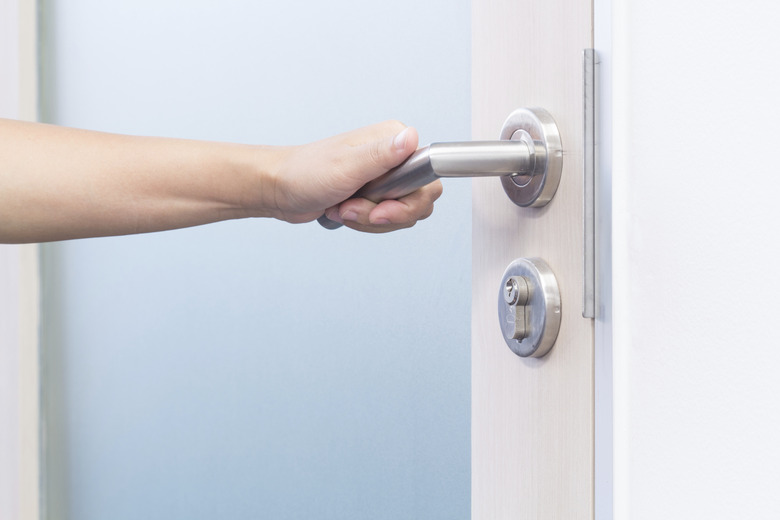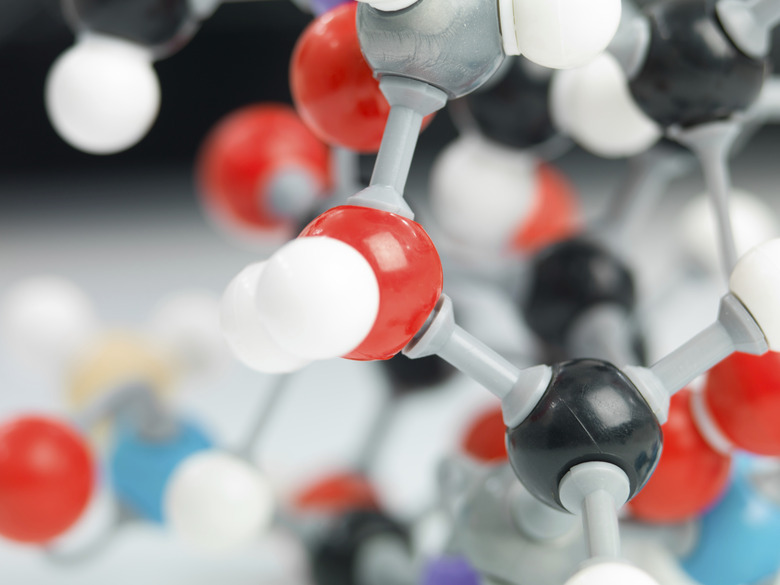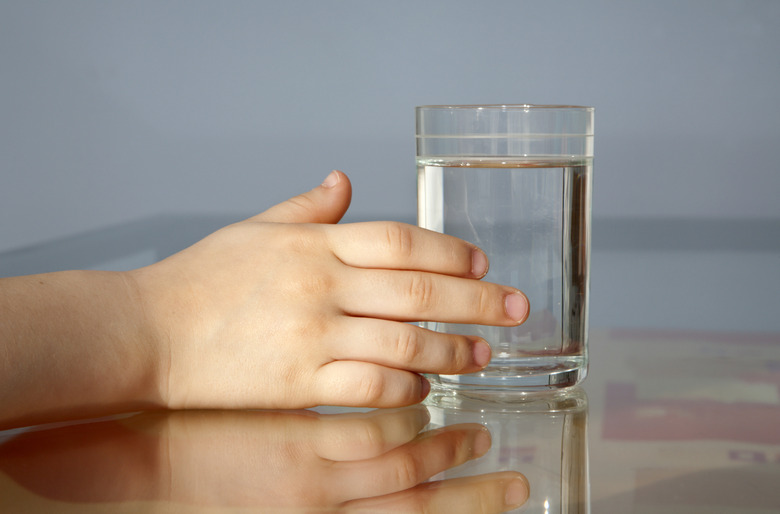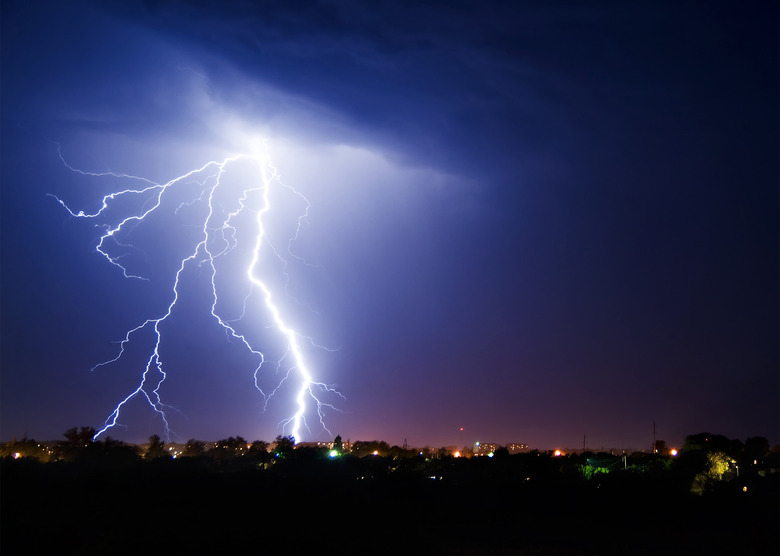How Does An Object Become Positively Charged?
Have you ever seen a lightning strike or gotten shocked when you touched a doorknob? If so, you've observed the power of electrical charges in action. Positive and negative electrical charges are created from the movement of tiny particles called electrons. While electrons are so small that they can't even be seen with a microscope, you can see how positive and negative charges form just by using items in your own house.
Electrons and Charge
Electrons and Charge
You might already know that all matter is made up of microscopic particles called atoms. However, atoms are made up of even smaller particles called electrons, protons and neutrons. Protons are found in the center, or nucleus, of an atom, and have a positive charge; neutrons are also found in the nucleus but have no charge. Electrons orbit the nucleus and are negatively charged.
Normally, an atom has an equal number of protons and electrons. However, because electrons are found in the outer part of an atom, they will sometimes move from one atom or group of atoms to another. When an atom or group of atoms has more electrons than protons, it is negatively charged. When an atom or group of atoms has more protons than electrons, it is positively charged. An atom or group of atoms that has the same number of protons and electrons is neutrally charged.
How to Create a Positive Charge
How to Create a Positive Charge
If you ever have rubbed a balloon in your hair and used it to make your hair stand up, you already know how to make positive and negative charges. Whenever atoms rub up against each other, electrons can transfer between them. This means an object cannot become positively charged unless another object becomes negatively charged; those electrons have to go somewhere. When you rubbed the ballon in your hair, electrons moved from the atoms in your hair into the atoms in the balloon, making your hair positively charged and the balloon negatively charged.
Your hair stands up because objects with opposite charges are attracted to each other. You might have also stuck the balloon to one of the walls in your house. This is because charged objects, whether positive or negative, are also attracted to neutrally charged objects, like the wall. However, if you brought the balloon close to another balloon you charged this way, the two balloons would move away from each other. This is because two objects with the same charge, whether positive or negative, always repel each other.
Triboelectric Series
Triboelectric Series
You've seen how the electrons move from your hair to the balloon when you rubbed them against each other. But why did they move from your hair to the balloon and not the other way around? The balloon will always end up negatively charged in this experiment, because certain substances give up electrons more easily than others, and it will always be easier for the rubber in the balloon to take electrons from your hair than for your hair to take electrons from the balloon.
A triboelectric series is a list that shows how easy it is for different substances to take electrons from each other. The lower a substance is on a triboelectric series, the more likely it is to become negatively charged. A substance can take electrons from any substances above it on the series. For example, take the following triboelectric series:
Hair Glass Paper Wool Vinyl Latex Teflon
You can see that rubbing teflon on any of the other substances on this list will make these materials positively charged, because the teflon can take electrons from all of them. And any substance on this list can become negatively charged by taking electrons from your hair.
Why Does Lightning Strike?
Why Does Lightning Strike?
Positive and negative charges are also the reason that lightning strikes during thunderstorms. Thunderclouds form when droplets of water in the cold, upper parts of the atmosphere freeze solid and fall; at the same time, updrafts carry water vapor up. The falling and rising water rub against each other: The falling water becomes negatively charged, and the rising water becomes positively charged. Because of this, the thundercloud is negatively charged on the bottom and positively charged on top.
Normally, because a charged object is attracted to a neutrally charged object, the electrons in the thundercloud would slowly flow to the neutrally charged ground. However the air in between the cloud and the ground serves as an insulator, a substance that prevents electrons from moving through it easily. But once a strong enough negative charge builds up at the bottom of the cloud, even the air cannot stop it. The electrons all jump to the ground at once in the form of a lightning strike.
Cite This Article
MLA
Zamboni, Jon. "How Does An Object Become Positively Charged?" sciencing.com, https://www.sciencing.com/object-become-positively-charged-4923806/. 24 April 2017.
APA
Zamboni, Jon. (2017, April 24). How Does An Object Become Positively Charged?. sciencing.com. Retrieved from https://www.sciencing.com/object-become-positively-charged-4923806/
Chicago
Zamboni, Jon. How Does An Object Become Positively Charged? last modified March 24, 2022. https://www.sciencing.com/object-become-positively-charged-4923806/




